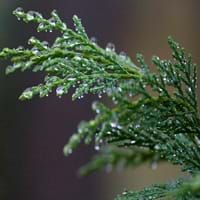Life Span
Perennial
Perennial
Type
Needled or Scaled Evergreen
Grass
Origin
Hybrid origin
China
Types
not available
Not Available
Habitat
All sorts of environments, Alpine Meadows, High elevation, Hilly upland habitat
Forest margins, gardens, Grassland, Tropical regions
USDA Hardiness Zone
6-9
8-15
Sunset Zone
3b, 4, 5, 6, 7, 8, 9, 10, 11, 12, 13, 14, 15, 16, 17, 18, 19, 20, 21, 22, 23, 24
H1, H2, 8, 9, 14, 15, 16, 17, 18, 19, 20, 21, 22, 23, 24
Habit
Pyramidal
Clump-Forming
Minimum Width
Not Available
Flower Color
Non Flowering Plant
Not Available
Flower Color Modifier
Bicolor
Bicolor
Fruit Color
Brown
Not Available
Leaf Color in Spring
Green, Blue Green, Gray Green
Light Green, Dark Green
Leaf Color in Summer
Green, Blue Green, Gray Green
Light Green
Leaf Color in Fall
Green, Blue Green, Gray Green
Light Green, Dark Green
Leaf Color in Winter
Green, Blue Green, Gray Green
Light Green, Dark Green
Leaf Shape
needle shaped
Grass like
Plant Season
Spring, Summer, Fall, Winter
Spring, Summer, Fall, Winter
Sunlight
Full Sun
Full Sun, Partial Sun, Partial shade
Type of Soil
Clay, Loam
Loam, Sand
The pH of Soil
Acidic, Neutral, Alkaline
Acidic, Neutral, Alkaline
Soil Drainage
Well drained
Average
Bloom Time
All year
Not Available
Tolerances
Cold climate, Deer resistant
Drought
Where to Plant?
Ground
Ground, Pot
How to Plant?
Hardwood Cuttings, Transplanting
Seedlings, Transplanting
Plant Maintenance
Medium
Medium
Watering Requirements
Average Water Needs
Keep the ground moist but not water-logged, Requires regular watering, Use and maintain water-efficient soaker hoses, Use Mulches to help prevent water loss during hot and windy weather, Water every two or three days during warmer months, Water twice a day in the initial period
In Summer
Lots of watering
Lots of watering
In Spring
Moderate
Moderate
In Winter
Average Water
Average Water
Soil pH
Acidic, Neutral, Alkaline
Acidic, Neutral, Alkaline
Soil Type
Clay, Loam
Loam, Sand
Soil Drainage Capacity
Well drained
Average
Sun Exposure
Full Sun
Full Sun, Partial Sun, Partial shade
Pruning
Prune for size control, Prune if you want to improve plant shape, pruning needed for strong structure, Remove damaged leaves, Remove dead branches, Remove dead leaves
Remove damaged leaves, Remove dead branches, Remove dead leaves
Fertilizers
All-Purpose Liquid Fertilizer, slow-release fertilizers
All-Purpose Liquid Fertilizer
Pests and Diseases
Canker, Root rot, Stigmina needle blight
Red blotch
Plant Tolerance
Cold climate, Deer resistant
Drought
Flower Petal Number
Single
Single
Foliage Texture
Fine
Medium
Foliage Sheen
Matte
Matte
Allergy
Unknown
no allergic reactions
Aesthetic Uses
Formal Garden, Ornamental use, Showy Purposes, Woodland margins
Beautification
Beauty Benefits
Not Available
Not Available
Environmental Uses
Air purification
Air purification
Medicinal Uses
No Medicinal Use
Not Available
Part of Plant Used
Not Available
Whole plant
Other Uses
Acts as a natural source of rain water for birds and insects., deer resistant, Used as Christmas Tree
Culinary use, Used in construction, Used in Furniture, Used in making musical instruments, Used in paper industry
Used As Indoor Plant
No
No
Used As Outdoor Plant
Yes
Yes
Garden Design
Feature Plant, Hedges, Mixed Border, Screening, Wind Break
Container, Feature Plant, Hedges, Screening / Wind Break, Tropical
Botanical Name
X CUPRESSOCYPARIS leylandii
BAMBUSA multiplex 'Alphonso-Karrii'
Common Name
Leylandii
Alphonse Karr Bamboo, Clumping Bamboo, Hedge Bamboo
In Hindi
Leyland cypress
अल्फोंस Karr बांस
In German
Leyland-Zypresse
Alphonse Karr Bamboo
In French
Cyprès de Leyland
Alphonse Karr Bamboo
In Spanish
Cupressus leylandii
Alphonse Karr Bambú
In Greek
Leyland Cypress
Alphonse Karr Μπαμπού
In Portuguese
Cipreste-de-leyland
Alphonse Karr Bamboo
In Polish
Cyprysowiec Leylanda
Alphonse Karr Bamboo
In Latin
Leyland Cypress
Alphonse Karr Bamboo
Phylum
Coniferophyta
Not Available
Class
Pinopsida
Not Available
Family
Cupressaceae
Poaceae
Clade
Not Available
Angiosperms, Commelinids, Monocots
Tribe
Not Available
Bambuseae
Subfamily
Not Available
Bambusoideae
Number of Species
Not Available
Not Available
Importance of Leyland Cypress and Alphonse Karr Bamboo
Want to have the most appropriate plant for your garden? You might want to know the importance of Leyland Cypress and Alphonse Karr Bamboo. Basically, these two plants vary in many aspects. Compare Leyland Cypress and Alphonse Karr Bamboo as they differ in many characteristics such as their life, care, benefits, facts, etc. Every gardener must at least have the slightest clue about the plants he wants to plant in his garden. Compare their benefits, which differ in many ways like facts and uses. The medicinal use of Leyland Cypress is No Medicinal Use whereas of Alphonse Karr Bamboo is Not Available. Leyland Cypress has beauty benefits as follows: Not Available while Alphonse Karr Bamboo has beauty benefits as follows: Not Available.
Compare Facts of Leyland Cypress vs Alphonse Karr Bamboo
How to choose the best garden plant for your garden depending upon its facts? Here garden plant comparison will help you to solve this query. Compare the facts of Leyland Cypress vs Alphonse Karr Bamboo and know which one to choose. As garden plants have benefits and other uses, allergy is also a major drawback of plants for some people. Allergic reactions of Leyland Cypress are Unknown whereas of Alphonse Karr Bamboo have no allergic reactions respectively. Having a fruit bearing plant in your garden can be a plus point of your garden. Leyland Cypress has no showy fruits and Alphonse Karr Bamboo has no showy fruits. Also Leyland Cypress is not flowering and Alphonse Karr Bamboo is not flowering . You can compare Leyland Cypress and Alphonse Karr Bamboo facts and facts of other plants too.





